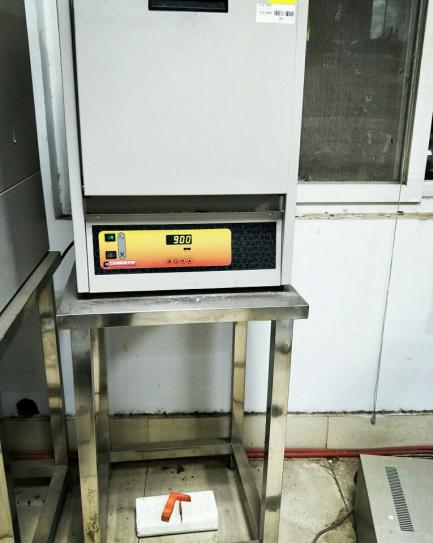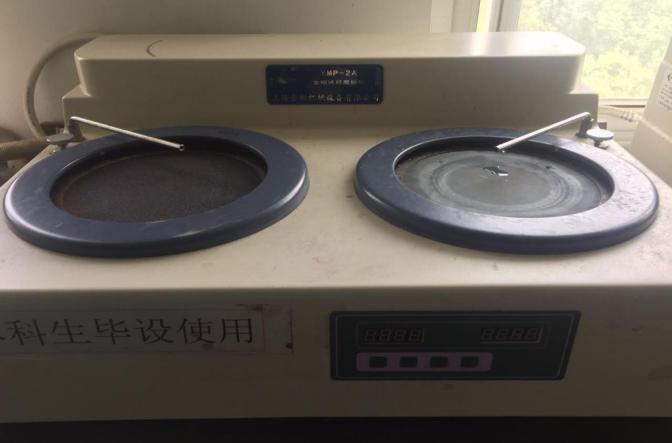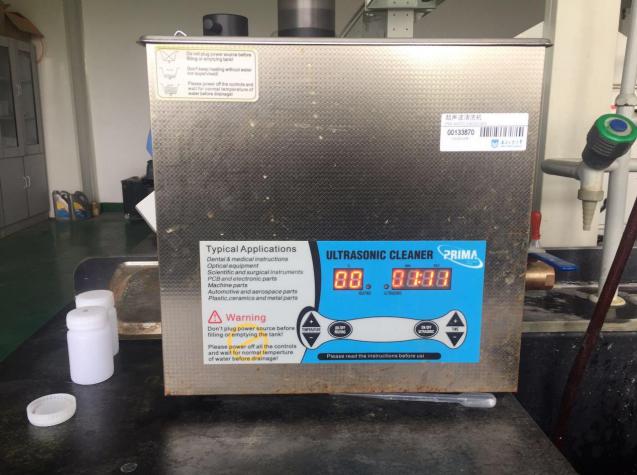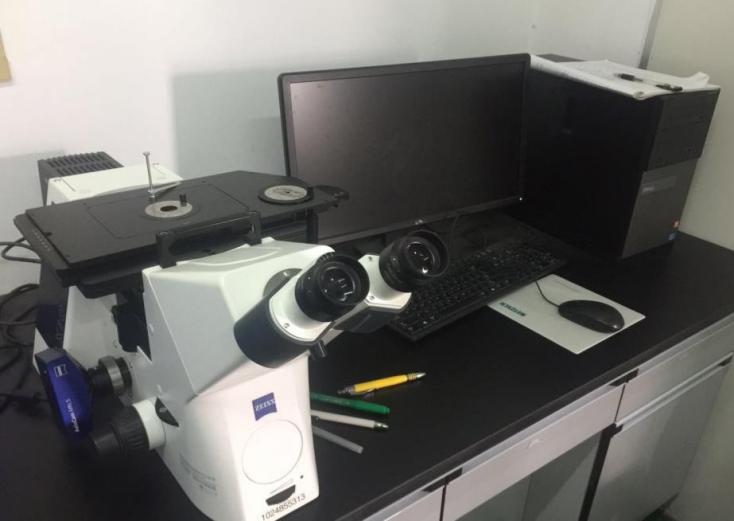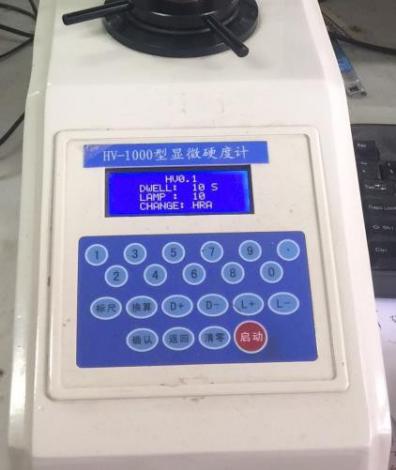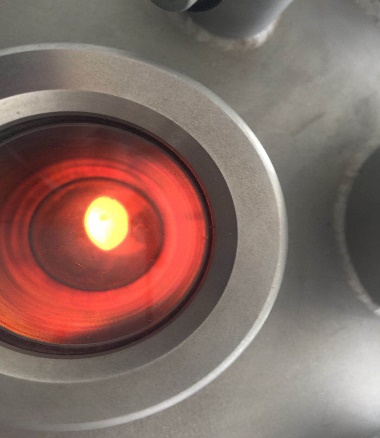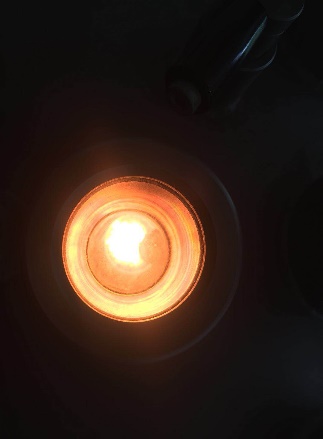Ti-2.5Al-3.5Fe-0.1B合金悬浮熔炼和热处理工艺对组织和性能影响毕业论文
2020-07-05 17:38:17
摘 要
钛合金具有热强度高、耐腐蚀、低温性能好等特点,可被广泛应用于军事及民用行业,从上世纪五十年代开始得到世界上许多国家的关注与研究。而Al元素在钛合金中发挥着至关重要的作用,在钛合金中加入Al元素可以降低钛合金的比重、增加合金弹性模量和高温性能、稳定钛合金α相。此次试验在实验室研究的Ti-Fe-B合金的基础上加入Al元素并对其进行不同工艺的热处理后,通过金相电子显微镜、 示差扫描量热法 、扫描电子显微镜、X 射线衍射仪、万能拉伸试验机、维氏硬度仪等设备观察分析材料的组织组成及力学性能。研究结果表明:
1.Ti-2.5Al-3.5Fe-0.1B合金为α β相两相合金,锻态组织为片层状组织。不同热处理处理前后合金相比例没有太大变化,但形貌和尺寸变化明显。普通退火后合金与锻态组织相似,α相变薄,β相更为明显。双重退火后β晶粒上析出少量次生α相,出现少量魏氏组织。β退火后的合金,α相厚度更小,β晶界清晰。
2.Ti-2.5Al-3.5Fe-0.1B合金的屈服强度为铸态820MPa,普通退火819MPa,双重退火835MPa,β退火834MPa,对应的抗拉强度分别是1015MPa、1066MPa、1024MPa、1076MPa。比较得知热处理后的合金强度都比铸态高,其中双重退火后的合金强度最优。
3.普通退火后的Ti-2.5Al-3.5Fe-0.1B合金断后伸长率最大,为17.87%,硬度中最高,达到301.06HV。
4.热处理前后Ti-2.5Al-3.5Fe-0.1B合金在断口处总存在大小不一的韧窝,都属于微孔聚集型断裂,表明合金具有较好的塑性,且普通退火后合金无撕裂棱,塑性更好。
关键词:钛合金 热处理 组织 力学性能
Levitation Melting and Effect of Heat Treatment on Microstructure and Properties of Ti-2.5Al-3.5Fe-0.1B Alloy
ABSTRACT
Titanium alloy has the characteristics of high thermal strength, corrosion resistance, and good low temperature performance. It can be widely used in military and civilian industries. It has attracted the attention and research of many countries in the world since the 1950s.Among them, Al plays an important role in titanium alloys. Addition of Al in the titanium alloy can reduce the specific gravity of the titanium alloy, increase the elastic modulus and high temperature properties of the alloy, and stabilize the α phase.The experiment was based on the laboratory study of Ti-Fe-B alloy Al element and heat treatment of different processes, through the metallographic electron microscope, differential scanning calorimetry, scanning electron microscopy, X-ray diffraction Instrument, universal tensile tester, Vickers hardness tester and other equipments were used to observe and analyze the microstructure and mechanical properties of the materials. Experimental results show that:
1.The Ti-2.5Al-3.5Fe-0.1B alloy is an α β-phase two-phase alloy, and the forged structure is a lamellar structure. There was not much change in the alloy before and after different heat treatment treatments, but the morphology and size changed significantly. After the ordinary annealing, the alloy is similar to the forged one, and the α phase is thin and the β phase is more obvious. After the double annealing, a small amount of secondary α phase precipitated on the β grains, and a small amount of Weishi structure appeared. After the β-annealed alloy, the α-phase thickness is smaller and the β grain boundary is clear.
2.The yield strength of Ti-2.5Al-3.5Fe-0.1B alloy is 820MPa for as-cast, 819MPa for ordinary annealing, 835MPa for double annealing and 834MPa for β annealing, and the corresponding tensile strengths are 1015MPa, 1066MPa, 1024MPa, and 1076MPa, respectively. It is known that the strength of the alloy after heat treatment is higher than that of the as-cast alloy, and the strength of the alloy after double annealing is optimal.
3. The average elongation after fracture of Ti-2.5Al-3.5Fe-0.1B alloy after ordinary annealing is 17.87%, which is the highest among the hardness, reaching 301.06HV.
4. Before and after heat treatment Ti-2.5Al-3.5Fe-0.1B alloys always exist dimples of different sizes at the fracture, which belong to the micro-aggregated fracture, indicating that the alloy has good plasticity, and the alloy does not have torn edges after ordinary annealing. Better plasticity.
Keywords:Titanium alloy Heat treatment Microstruction Mechanical property
目录
摘 要 I
ABSTRACT II
第一章 文献综述 1
1.1钛合金概述 1
1.1.1钛合金的分类 1
1.1.2.钛合金中合金元素的作用 1
1.2钛合金熔炼 2
1.2.1真空自耗电弧熔炼 2
1.2.2冷床炉熔炼 3
1.2.3悬浮熔炼 3
1.3.钛合金热处理工艺 4
1.3.1 普通热处理 4
1.3.2 β退火处理 4
1.3.3 双重退火 4
1.4.实验目的和内容 4
第二章 实验方案 6
2.1实验原材料 6
2.2技术路线 6
2.3试验方法 7
2.3.1悬浮熔炼 7
2.3.2DSC差热分析法 7
2.3.3合金的锻造 8
2.3.4热处理实验 8
2.3.5金相组织观察 9
2.3.6XRD观察 10
2.3.7拉伸实验 11
2.3.8扫描电镜观察 11
2.3.9硬度实验 11
第三章 实验数据及分析 12
3.1合金的悬浮熔炼 12
3.2合金相变点的确定 14
3.3锻态组织分析 15
3.4热处理后锻态组织分析 15
3.5显微硬度测试 16
3.6合金室温拉伸性能测试 17
3.6.1锻态合金拉伸测试 17
3.6.2热处理后合金拉伸测试 18
3.6.3拉伸断口形貌分析 19
3.7 XRD衍射分析 21
第四章 结论 23
参考文献 24
致 谢 27
第一章 文献综述
1.1钛合金概述
1.1.1钛合金的分类
α型钛合金是一种由工业纯钛和稳定α元素组成的合金,主要以铝、锆、锡作为合金元素。在室温和使用温度下α钛合金具有α型单相态,α型钛合金的强化方式主要靠固溶强化,淬火为α型钛合金唯一的处理方式。室温下α型钛合金强度高于工业纯钛但比β型和α β型钛合金强度低,高温下的α型钛合金有最高的强度。α型钛合的优点是强抗氧化性,组织稳定且拥有优异的切削加工性能,但它也存在室温下冲压性能差、高温下塑性低等缺点[1-2]。
β型钛合金定义成β稳定元素含量超过Cβ的合金,这种合金在退火后相组成为β单相且组织稳定。β钛合金进行正火时会获得介稳定的β单相组织,这是合金中β稳定元素将高温β相留存到室温后形成的。β型钛合金耐腐蚀性能好、具有热强性、冷成型性和热强性;缺点是熔炼工艺复杂,性能不够稳定,故应用范围较小。
相关图片展示:
